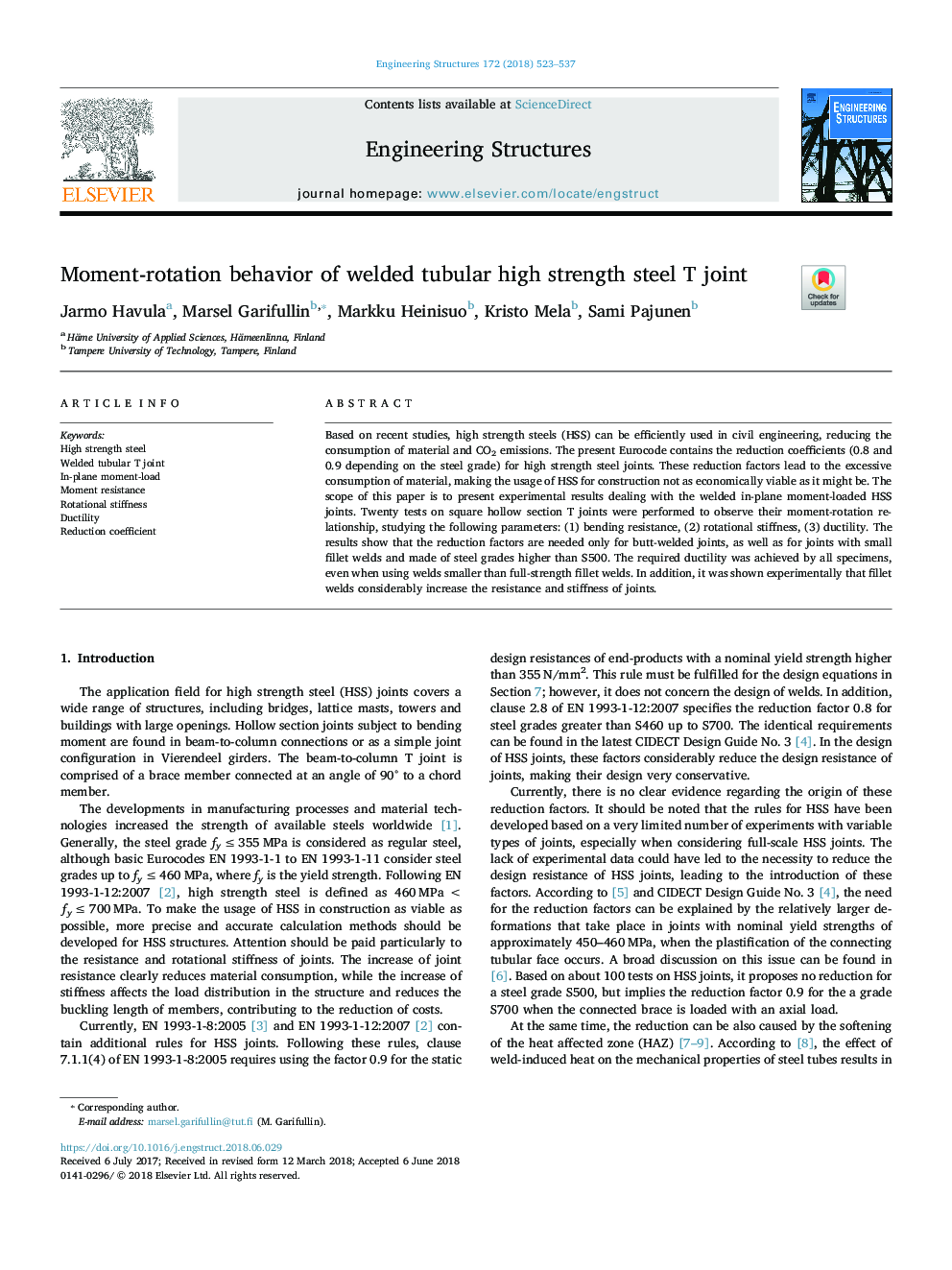| Article ID | Journal | Published Year | Pages | File Type |
|---|---|---|---|---|
| 6736158 | Engineering Structures | 2018 | 15 Pages |
Abstract
Based on recent studies, high strength steels (HSS) can be efficiently used in civil engineering, reducing the consumption of material and CO2 emissions. The present Eurocode contains the reduction coefficients (0.8 and 0.9 depending on the steel grade) for high strength steel joints. These reduction factors lead to the excessive consumption of material, making the usage of HSS for construction not as economically viable as it might be. The scope of this paper is to present experimental results dealing with the welded in-plane moment-loaded HSS joints. Twenty tests on square hollow section T joints were performed to observe their moment-rotation relationship, studying the following parameters: (1) bending resistance, (2) rotational stiffness, (3) ductility. The results show that the reduction factors are needed only for butt-welded joints, as well as for joints with small fillet welds and made of steel grades higher than S500. The required ductility was achieved by all specimens, even when using welds smaller than full-strength fillet welds. In addition, it was shown experimentally that fillet welds considerably increase the resistance and stiffness of joints.
Related Topics
Physical Sciences and Engineering
Earth and Planetary Sciences
Geotechnical Engineering and Engineering Geology
Authors
Jarmo Havula, Marsel Garifullin, Markku Heinisuo, Kristo Mela, Sami Pajunen,
